It’s easy to munge DA and MDA into the single concept of minimums. Yet, decision altitude (DA) and minimum descent altitude (MDA) are very different concepts. As the names suggest, DA is a decision point while MDA is the lowest altitude allowed without visuals.
The difference between DA vs MDA is reflected in the regulations, Practical Test Standards (PTS, soon Airman Certification Standards) and TERPS. Without required flight visibility and runway environment, 91.175 says we can’t go below MDA. Yet, for an approach with a DA/DH, the rules only say an approach cannot be continued.
This difference persists in the PTS. For a precision approach, a pilot “initiates immediately the missed approach when at the DA/DH, and the required visual references for the runway are not unmistakably visible and identifiable.” Compare that to the non-precision approach standards: A pilot “maintains the MDA, when reached, within +100 feet −0 feet, to the MAP.” (Emphasis added.)
These characteristics mean procedures with DAs and MDAs must be flown with a different mindset using different skills, tricks, and cues.
Getting Down to DA
The FAA’s Terminal Instrument Procedures (TERPS) prescribes the standards for designing instrument procedures. The Order defines a decision altitude as “a specified altitude in reference to mean sea level in an approach with vertical guidance at which a missed approach must be initiated if the required visual references to continue the approach have not been established.” This complements the requirements in the PTS but ignores unique features of precision approaches.
For a precision approach to be developed, a glideslope qualification slope must be clear of obstacles (with few, limited, exceptions). This slope isn’t as shallow as an obstacle clearance surface (OCS) and obstacles that penetrate the OCS will cause the DA to be raised. But, this means that a glideslope will be clear of obstacles to the runway.
A clear area is necessary below DA since the missed approach maneuver is “initiated” at DA. According to the PTS, the maneuver is accomplished by “promptly applying power, establishing a climb attitude, and reducing drag.” It doesn’t take a PhD to realize that adding power while pointing down propels the plane in that direction. TERPS guidance takes “height loss and establishment of missed approach climb gradient” into account.
Just because the glide path is clear doesn’t mean DA is a place to dally. Sliding to the ground at approach speed is no time to mess around. Making a good decision and properly executing a missed approach is necessary.
We rarely get weather that’s right at minimums. Making an accurate visibility assessment and determining the runway environment is challenging. As a rule of thumb, the approach lighting system should be visible at DA and the runway end must be identifiable by 100 feet above TDZE. If there is no approach lighting system, the runway end should to be discernible at DA with required visibility. (The lowest RVR any approach can permit without an approach lighting system is 4000 feet.)
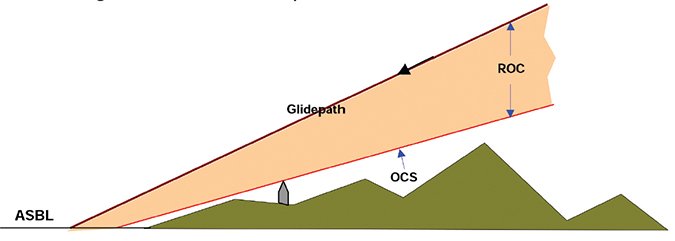
Expectations and emotions seed bias and color perception. That’s psychobabble for, “We tend to see what we expect to see.” To counteract that expectation bias, I view a precision approach as a balance between landing and going missed. As an approach proceeds closer to the DA without visual cues, the balance weighs towards a missed approach. This is similar to the concept of take-off decision speed, V1. As V1 nears, the decision weighs more and more toward taking off. For an approach, the decision should weigh towards a missed approach.
When was the last time you missed for real? Outside of training, most approaches are flown to a landing. As a rule, things done often don’t need practice and things done rarely, do, and we just don’t often go-around or miss.
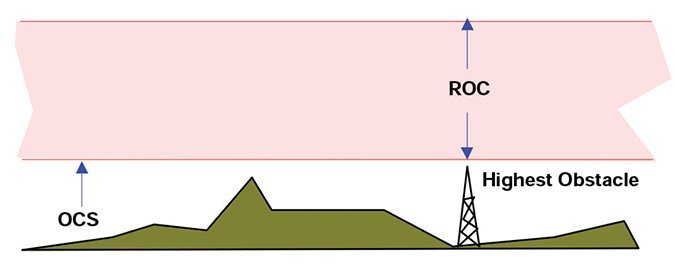
Go-Around or Missed?
We should probably differentiate go-arounds from missed approaches. A missed approach is a procedure to be followed: specific headings, courses and altitudes—the last segment of an instrument approach. The go-around, alternatively, is a maneuver that transitions from the visual or instrument approach to a climb. It isn’t instrument specific.
Of course, go-arounds and missed approaches are related. A go-around must be accomplished correctly to comply with the procedural requirements of a missed approach.
Practice doesn’t always require actual performance—it can be as simple as mentally reviewing the steps. Precision (and, as we’ll see, CDFA non-precision) approaches provide time to accomplish a go-around review. Intercepting glideslope at 1500 feet AGL provides time to establish a descent and review a go-around before counting down to minimums. For me, it’s as simple as at mins without the runway I’ll call, “Missed approach, add power, pitch up, flaps 10, positive rate, gear-up.” It’s quoted because I’ll actually say it (or mutter it to myself).
Go-arounds are deceptively challenging. The landing expectation before the DA decision can cause hasty actions and missed steps. The TERPS account for some deviation below DA during the maneuver; there’s no reason to rush.
When flying the heavy iron, it’s typical to descend less than 50 feet below DA during a go-around. I asked Larry Bother, Master CFI and DPE from Seymour, IN, what he looks for during a go around on instrument examinations, and he said:
“I’m looking to see that the applicant promptly but smoothly applies climb power, while at the same time adjusting the pitch attitude to an appropriate climb/airspeed. I’m not staring at the altimeter to determine exactly how far below the DA the airplane went before the climb started. I just want to see that the miss was initiated without dawdle or delay (but not instant or jerky).”
Performing a go-around smoothly and in the correct sequence is only part of the challenge.

Accelerating or Climbing?
Spatial disorientation, particularly the somatogravic illusion, adds to the challenges of a go-around. With this illusion, acceleration, as occurs during take-off or while performing a go-around creates the perception of pitching up. Pilots are particularly susceptible during periods of poor visibility, like during an approach in IMC.
In one notable NTSB investigation, the pilot of a Baron began a missed approach but then leveled at 600 feet AGL before entering an 18-degree dive. The Board determined the probable cause of the accident was the “pilot’s spatial disorientation due to a somatogravic illusion while conducting a missed approach in instrument meteorological conditions.”
The somatogravic illusion can affect any pilot. The Tatarstan 737 crash in 2013 was attributed to it and the recent FlyDubai accident also fits the profile.
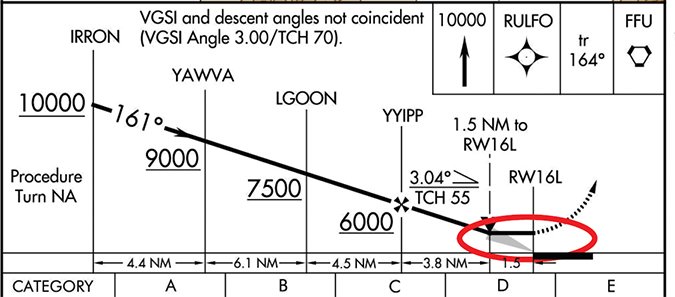
Changing MDA to DDA
While DA on glideslope is the missed approach point for precision approaches, reaching a non-precision approach (NPA) minimum descend altitude (MDA) isn’t. NPAs are designed with level obstacle clearance. The MDA is the lowest we can descend and the MAP is the furthest one can go before landing or beginning the missed approach.
The dive-n-drive method of flying NPAs is giving way to the constant descent final approach (CDFA). The FAA contends that CDFA increases safety, improves situational awareness, reduces workload, improves fuel efficiency, reduces noise level, and reduces the probability of infringing the obstacle clearance area. Good stuff.
We’ve covered the CDFA before (See “Constant Angle Descent” in May 2014) but a quick review is in order.
A CDFA takes three steps. The first is determining the top of descent, typically the FAF. Next you determine the requisite descent rate. Jepp and Aeronautical Information Service (AIS, formerly AeroNav, formerly NOS…) charts publish vertical descent angles. TERPS requires that these angles be determined “for all NPA procedures except those published in conjunction with vertically-guided minima or no-FAF procedures without stepdown fix(es).” Jeppesen incorporates a descent angle and ground speed/vertical speed on the chart, while AIS puts a table elsewhere in the booklet. Finally, a derived decision altitude must be established (DDA).
As the advisory circular describing CDFA emphasizes, “pilots must not descend below the MDA when executing a missed approach.” This is accomplished by adding a buffer— called a derived DA (DDA)—to the MDA to accommodate the go-around. Commercial operators add 50 feet to create a DDA. This works for an airliner, but is excessive for a C-172; 20 or 30 feet is sufficient for most light GA. Creating a DDA is also a good idea for LNAV+V or LP+V since the V is simply electronic guidance for a CDFA.
Flying a CDFA is simple. Reaching the top of decent point, begin a descent at the determined rate until reaching the DDA. If the runway environment is visible at DDA, land. If not, miss.
One caveat is that the missed approach is predicated on beginning at the MAP and not the DDA. Bozeman, Montana provides an example. A hill lies just south of course and 66 feet below the MDA. By turning on the missed early a pilot would head right toward it. The final approach course must be followed until the MAP; climbs can begin earlier.
A normally flown CDFA isn’t usually an option for circling approaches or checkrides. Circling approaches require leveling off at minimums for the circle, and instrument and ATP standards require maintaining MDA to the MAP. Of course, you could still use a continuous descent to DDA then inch down to MDA once stabilized, but that’s a different discussion.
Missed Procedures
I can’t seem to memorize a whole missed approach. So, instead I try to remember the info before the first comma and have an idea of where things go from there. The first couple words are what need to be done after clean up and climb.
If the missed gets bungled, possibly due to a navigator mishap, bearing pointers and MSAs help. A bearing pointer simply points to whatever is tuned. It’s perfect for heading towards a VOR or tracking a radial while getting the box set up or twisting a CDI. If things get really dicey, it’s time to just climb to the safety of the MSA.
Although it’s easy to combine DA and MDA, they are different operational concepts. These differences are shown in the PTS, TERPS and the regulations. Precision approaches require a pilot initiate a missed approach at DA, while an MDA is the absolute lowest you’re authorized to go.
Flying a CDFA provides an opportunity to review a go-around and missed approach. If approach visibility isn’t up to snuff at minimums, it’s time to get out, fighting off the somatogravic illusions and head somewhere with nicer skies.
Jordan Miller is an ATP and CFI who, although it might not look like it, really doesn’t spend his spare time inventing new acronyms.

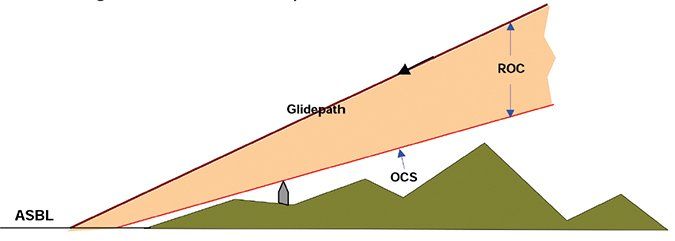
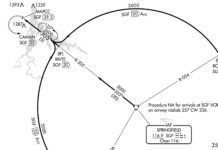
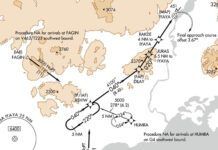


Very informative n not too boring I actually liked reading your article
Really informative I like the way is narrative.
Thank you Jordan, the way explained using 2 kids of the same mother etc was what it took me to grasp it! Please, kindly go on with more tricky topics to get it sorted in our heads!
Thank you
Why is the alternate method aka “the old method” labeled “dive-and-drive”? Have we forgotten what ‘Dive’ means? It isn’t a true dive. A dive is the opposite of a ‘Zoom’ meaning a dive is a trade from Potential Energy to Kinetic Energy. Yet that is not how or not how one should be flying the technique. One should be descending then flattening out with constant AOA (or airspeed in lieu of) typically meaning reducing power to descend, adding power to break inertia, then reducing slightly to maintain level. “Dive-and-Drive” naming seems to me to be used derisively so as to sell the CDFA.